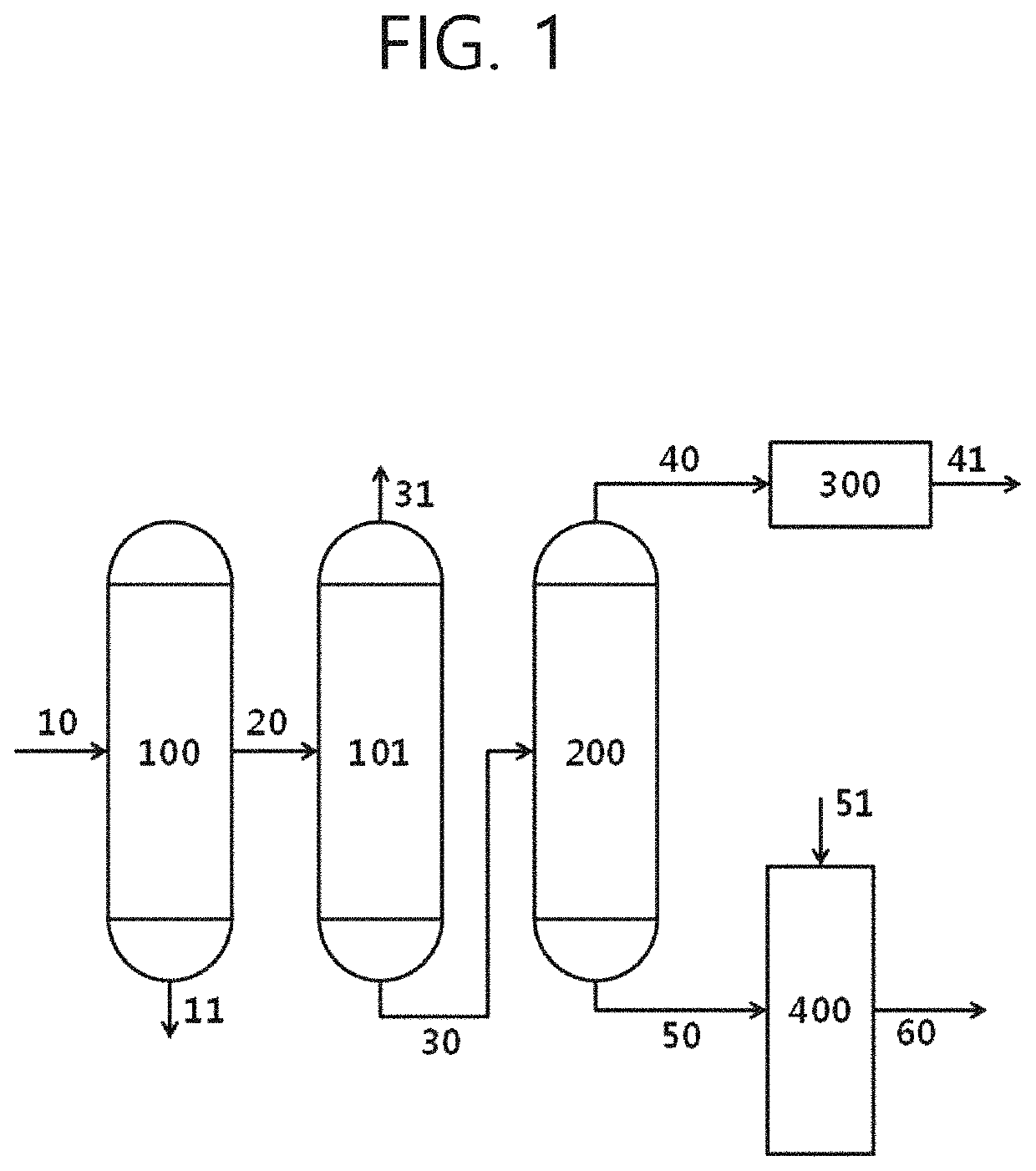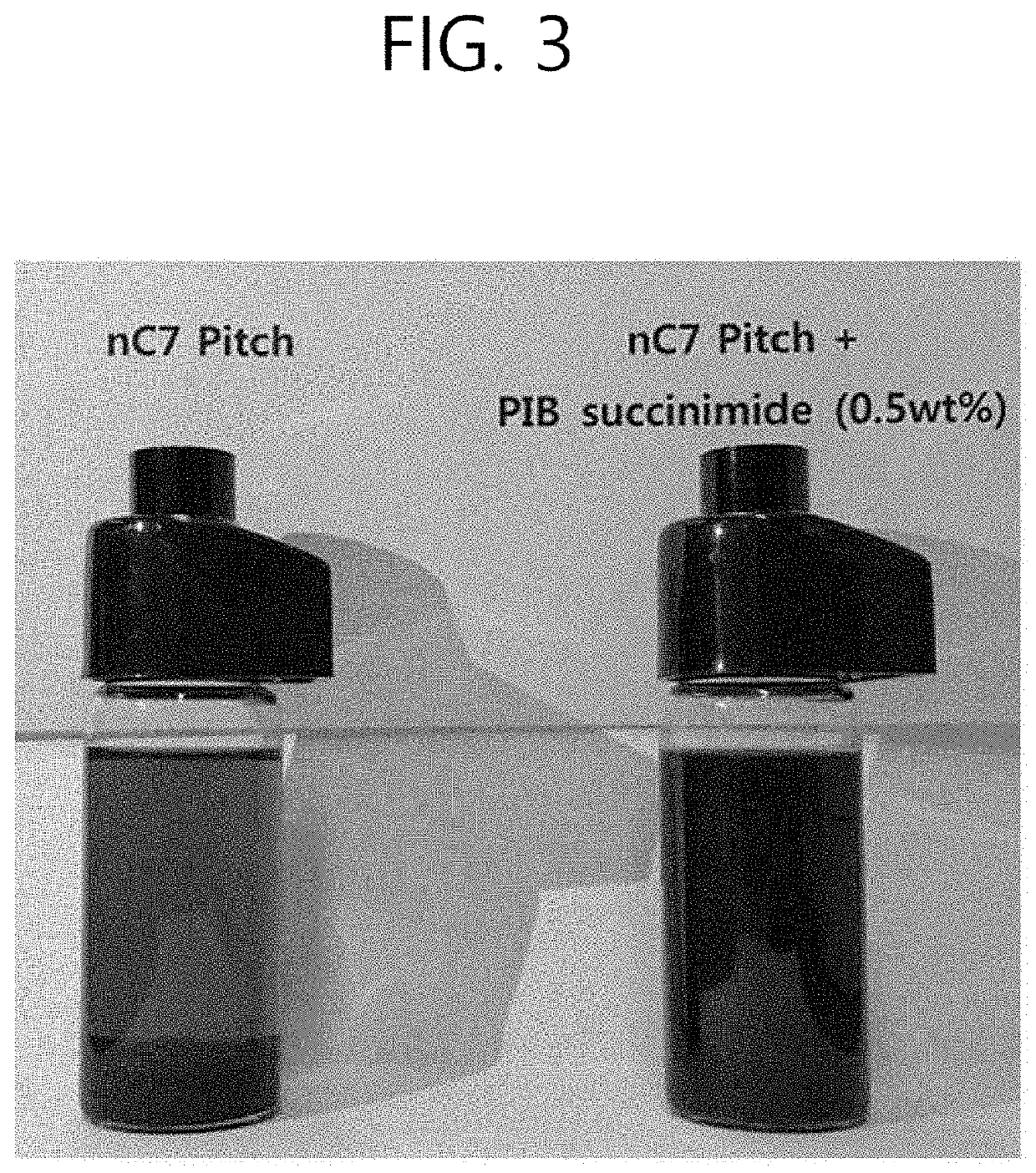Method for converting heavy oil by means of high asphaltene dispersion
a high asphaltene and oil technology, applied in the field of high asphaltene dispersion, can solve the problems of low selectivity of final products, slurry-phased hydrocracking reaction process may have a limit on the yield and economic efficiency of final products, and achieve the effect of improving the high dispersion of asphaltenes
- Summary
- Abstract
- Description
- Claims
- Application Information
AI Technical Summary
Benefits of technology
Problems solved by technology
Method used
Image
Examples
experiment 1
or Confirming Effects of Amphiphilic Additive
experimental example 1
of Raw Materials for Dispersion of Polar Compounds in Heavy Oil
[0071]The materials used as a feedstock in the evaluation of the hydrocracking reaction are the vacuum residue oils obtained from Hyundai Oilbank and the characteristics are as shown in Table 3. For the analysis of characteristics of the vacuum residue oils, the components of the elements and their respective contents were examined as follows: elemental analysis (Model: Thermo Scientific Flash 2000, detector: Thermal Conductivity Detector), X-ray fluorescence analysis (Model: Thermo / ARL QUANT'X), inductively coupled plasma-atomic emission spectrometry (ICP-AES; Model: Thermo Fisher Scientific iCAP 6500Duo) were used; and for Saturates, Aromatics, Resins and Asphaltenes (SARA) content analysis was determined by SARA analyzer (Model: Latroscan MK6s), boiling point distribution by ASTM D7169 (GC-Simdis) method, and non-degradable carbon residue (Conradson carbon residue; CCR) by ASTM D189.
[0072]
TABLE 3Characteristics of vac...
experimental example 2
nd Mo-Octoate
[0074]Mo-octoate (Shepherd Chemical Co.; Mo Content 15%; oxidation number 3.8), an organometallic compound, was quantified and added to the vacuum residue oil (40 g), whose characteristics are disclosed in Experimental Example 1, and the mixture was agitated at 80° C. for 4 hours and prepared as the raw material of a hydrocracking reaction.
Experimental Example 3: Mixture of Heavy Oil and Mo(CO)6
[0075]Molybdenum hexacarbonyl (Mo(CO)6; Alfa Aesar Co.; Catalog #: 89307), a general precursor instead of an organic metal, was quantified and added to the vacuum residue oil (40 g), whose characteristics are disclosed in Experimental Example 1, and the mixture was agitated at 80° C. for 4 hours and prepared as the raw material of a hydrocracking reaction.
PUM
| Property | Measurement | Unit |
|---|---|---|
| dipole moment | aaaaa | aaaaa |
| dipole moment | aaaaa | aaaaa |
| net dipole moment | aaaaa | aaaaa |
Abstract
Description
Claims
Application Information
 Login to View More
Login to View More - R&D
- Intellectual Property
- Life Sciences
- Materials
- Tech Scout
- Unparalleled Data Quality
- Higher Quality Content
- 60% Fewer Hallucinations
Browse by: Latest US Patents, China's latest patents, Technical Efficacy Thesaurus, Application Domain, Technology Topic, Popular Technical Reports.
© 2025 PatSnap. All rights reserved.Legal|Privacy policy|Modern Slavery Act Transparency Statement|Sitemap|About US| Contact US: help@patsnap.com



